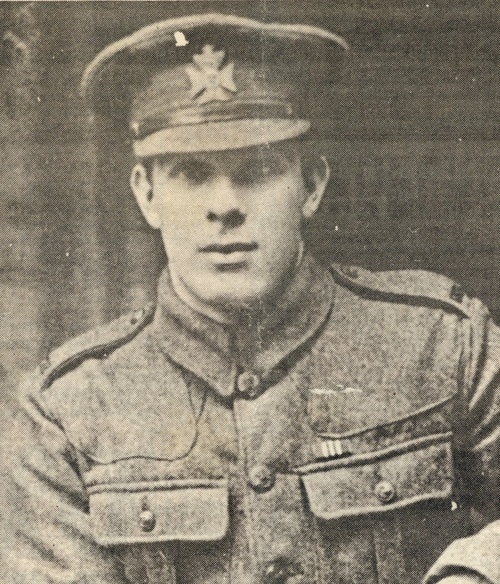Auction: 19003 - Orders, Decorations and Medals
Lot: 345
An important Great War 'Somme 1916' M.M. group of four awarded to Rifleman T. Green, King's Royal Rifle Corps, who was shot on four occasions and captured at Arras when knocked unconscious with the butt of an enemy rifle, he repeatedly carried out acts of sabotage deep behind enemy lines and was 'prepared to suffer' for conducting such actions - on one occasion offering up his finger in order to block and damage a machine manufacturing munitions; the damaged finger would thankfully recover but the machine met its maker
He famously climbed Reims Cathedral when it came under heavy shelling in April 1917 and whisked its ancient Standard to safety - with it being safely returned by his descendants in 1982; Green kept a personal account of his experiences which give a fascinating unpublished insight into life on the Western Front
Military Medal, G.V.R. (R-10845 Pte. T. Green. 8/K.R.R.C.); 1914-15 Star (R-10845 Pte. T. Green. K.R. Rif: C.); British War and Victory Medals (R-10845 Pte. T. Green. K.R. Rif. C.), minor contact marks, very fine (4)
M.M. London Gazette 9 December 1916.
Thomas Green served in France with the 8th Battalion, King's Royal Rifle Corps from 21 July 1915. Having trained at Aldershot and Bordon, his Battalion landed at Boulogne in May 1915 and was thrust into the attack at Hooge on 16 June 1915, being part of the first Division to be attacked with flamethrowers. Joining them shortly thereafter, Green likely fought during the Second Attack on Bellewarde on 25 September 1915 and saw further action during the Battle of the Somme, his handwritten diary entries - compiled in 1926 - describing the scene at Delville Wood:
'At last the morning of the attack came, 15 September 1916, after two days of continuous bombardment by the Germans which caused us great casualties. At 4 o'clock we were told to fix bayonets to go over the top, that was after creeping well up to the German lines into an advanced trench.'
He then described how, when the whistle blew, they 'went over as one man'. The attack succeeded in taking the first line of enemy defences, but in attempting the second line the Battalion experienced many casualties:
'I myself being the only one left in my bombing squad. I found out that I must do my duty and carry on to my objective, which was a machine-gun and gun team of six men. I got to within 15 yards range and swung my bombs till they were all gone. I had to pluck up and attack single-handed, so I jumped out of the shell hole, ran to the gun emplacement with a round of ammunition in my breech. I shot the sentry dead, and as luck would have it the other five were down the dugout, so I bombed them with their own bombs.'
From 14 March-5 April 1917, the 8th Battalion took part in the retreat to the Hindenburg Line. Ceding territory which made up the old Somme battlefields, the Germans took up a new formidable defensive position running from Reims to Vimy. It was at Reims that Green would next distinguish himself.
Rescuing the Standard
For nearly a millennium, the City of Reims was synonymous with its towering Gothic Cathedral known as Notre-Dame. Not to be confused with the cathedral sharing the same name in Paris, the Reims church was the heart and soul of the region, its tallest towers rising 265 feet above the City's 50,000 residents, its resplendent halls used for the Coronation of nearly every French Monarch since the 13th Century.
When the fighting began in August 1914, the invading German army quickly overwhelmed the north-east part of France, including Reims, and transformed the Cathedral into an infirmary. They filled the building with 3,000 cots and 15,000 bales of dried grass to use as pallets - all of which remained inside the building when the Germans were forced on a rapid retreat following the First Battle of the Marne. On 18 September 1914 the first attack came on the Cathedral when 5 shells crashed into the structure. The next day a more devastating barrage took place:
'The projectiles, perhaps incendiary, set afire first the scaffold around the towers, and then the hay. No more inflammable tinder could have been devised, and no accelerant was required' (The Smithsonian Magazine, Jan Ziolkowski, refers).
'Lead from the burning roofs poured through the mouths of the church's stone gargoyles, windows exploded and the Smiling Angel statue that had stood near the front door for centuries lost its head' (Reims Cathedral Burns, Eric Sass, refers).
In April 1917, Reims Cathedral faced a second intense bombardment, likely the result of the building being continuously used by the French and British for artillery spotting. According to the recollections of George Green, the son of Thomas Green, his father was extremely concerned for the Standard of the Cathedral:
'The flag was being shelled by the Germans and dad didn't like the idea of it being destroyed. He was a very moral person. He climbed up and retrieved it.'
The flag was later returned to Reims by the Green family in 1982.
Struck unconscious and P.O.W.
On 3 May 1917 the Allies launched the opening assault of the Battle of Bullecourt. According to Green's personal diary entry, the attack commenced at 4 a.m. and orders were given to advance as far as possible, hoping that they would break through before the Germans could bring in reinforcements:
'A few men got through, including two officers, two men and myself, but at about 10 o'clock we were held up and had to send for reinforcements.
The Germans attacked with heavy artillery and in great numbers. The two officers and myself were wounded and one of our men killed. My chum and myself fired as many rounds as possible into the Germans, because we thought it would be certain death if we were caught, so we were making as many casualties as possible.'
With all their efforts concentrated in front, Green and his friend were unaware that they had been outflanked and the Germans were now behind them. Taken by surprise, he was struck unconscious with a rifle butt, and when he came-to found himself in the middle of a Battery of German guns:
'Still quite dazed and not knowing what had happened, I saw my chum and he told me he had carried me four or five miles, hoping that if I did not recover I should stand a good chance of being buried respectably.'
Sabotage and Hunger Pangs
Marched for 4 days on a pound of bread made from saw dust and potato peelings, Green arrived at Lille and endured three weeks' punishment, packed 150 men to a 'dungeon'. Ventilation was poor, they were not allowed to wash or shave, and received only a few morsels of food:
'Men were dying every day. Lice was plentiful, as were scabies and body corns through lying on hard floors. The only words from the guards were "English swine", often accompanied by a blow from a rifle butt. The men were weak, hardly able to stand. They had the wild look of trapped animals. Their eyes were sunken in their sockets, and their beards made them look like old men, instead of young men in their prime' (The Mansfield Advertiser, refers).
Transferred to Brussels, Green was spat at by a German girl - whom he cursed. After a four-hour march to Dulman, the prisoners were stripped of their clothing, boots and belongings and put into a hut with about 200 others and nothing to eat:
'Three days past by and still no food. The pangs of hunger were eating me to death. A fire hose was turned on us, and wearing only paper clothing, most of us were left in our birthday suits, with no sympathy from the square heads.'
Given a breadcrumbs and injected against fever, Green was transported to work in a tin factory at Wermelskirchen. It was here that he attempted various acts of sabotage:
'After a few months I went to work in the factory on a machine which, in my opinion, was making some kind of munitions, so I put my finger under it. I then put a piece of iron in it and broke that, putting the machine out of action.
I received a good hiding from the guard, but had my finger dressed. That put an end to that job. The next job was helping with the electric light. I set the plant on fire, and had a court martial over a vat of acid in which they threatened several times to throw me.'
Transferred to a calf farm, Green's antics continued; he should have fed a calf milk twice a day, but drank the milk himself:
'The poor calf died, poor me was in trouble again. The military came and passed a sentence. I think it must have been to stop my Red Cross Parcels because I received very few.'
Transferred to a potato farm, Green ended his war being a thorn in the side of the Germans to the very end:
'…I couldn't do anything that I thought would assist them to make good, so I was prepared to suffer.'
Having also managed to escape from camp and being recaptured within a whisker of freedom, Green's deteriorating health finally caught up with him. He died in 1930 at Swanwick, his son attributing his early demise to the ill-treatment meted out as a guest of the Germans. Shot four times, George Green later recalled how as a child he used to play with the bullets. Thomas Green was given a full military funeral, a hero in the eyes of his family and the people of Swanwick, Derbyshire.
Sold with copied MIC, research, a copy of the local Mansfield Newspaper bearing a photograph of the recipient and detailed account of his Great War experiences, dated 17 September 1993, and his detailed, handwritten diary, which commences on 22 January 1918 - as written in pencil at Friedricksfeld, Bie Wesel, Rhienland. Approximately 50 pages (2,500 words) of war recollections and other musings, written between 1918 and approximately 1926.
Subject to 20% VAT on Buyer’s Premium. For more information please view Terms and Conditions for Buyers.
Estimate
£800 to £1,200
Starting price
£800







